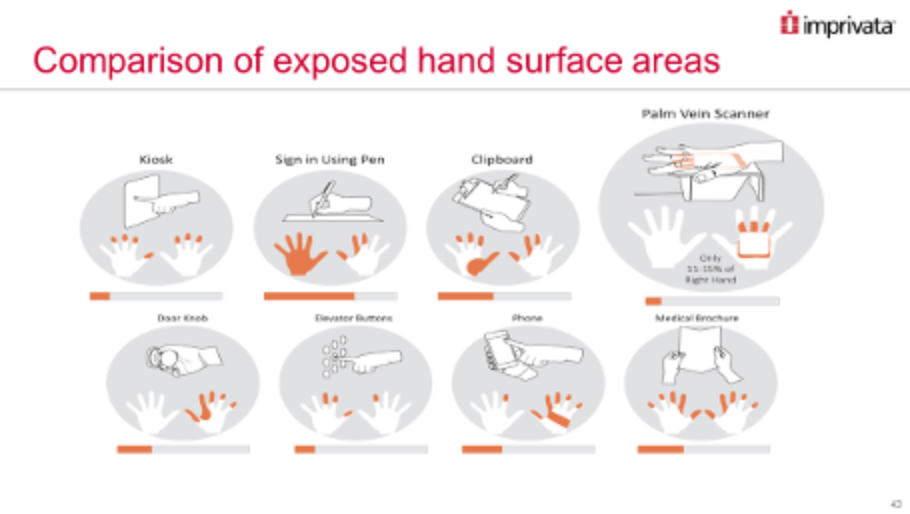Imprivata PatientSecure today: assessing risks vs. benefits
As a practicing emergency physician and the Chief Medical Officer at Imprivata, I know that the last eight weeks have been challenging for all of us. And the challenges will continue; but we are adapting and making progress day by day. As we continue to find our way to a “new normal,” I ask you to please consider this: In healthcare, we are always assessing RISKS versus BENEFITS.
The current risk levels are high for patients and caregivers alike. In order to minimize risk and maximize benefits, we need to use the most powerful tools at our disposal to maintain infection control vigilance and properly identify and treatpatients. This has never been more important. Imprivata PatientSecure is an incredibly powerful tool for ensuring patient and provider safety and the highest quality of care.
Patient identification is as critical as ever
One point that the COVID-19 crisis has reaffirmed for me is that accessing a patient’s complete and accurate health record is critical not only to maintain good infection control protocols, but also to deliver the safest and highest quality ofcare. Imprivata PatientSecure is essential to this process. Without Imprivata PatientSecure, the potential to create duplicates and overlays in this complex environment can lead to truly devastating clinical and financial consequences for an already stressed system.
Check-in process and the alternatives
We understand that some patients, or internal stakeholders at your organization, maybe concerned about the need to touch the Imprivata PatientSecure palm vein scanner during the enrollment or check-in process. But what are the risks/benefits of any alternatives? I would argue that the risk of any alternative methodology is actually higher to both provider and patient than the minimal risk of briefly touching the scanner once or twice after it has been properly cleaned like any other medical device, such as a blood pressure cuff or stethoscope.
What about the pen and clipboard, driver’s license, insurance card, and/or tablet device that would be needed to replace the scanner (with much less accuracy)? The minimal touch to the scanner provides such huge BENEFITS of nearly 100% accurate identification that it is almost irreplaceable. Compare this minimal risk for such large benefit to all the other surfaces that a patient touches throughout a visit (such as door handles, chairs, walls, table surfaces, railings,etc.) and it really puts the risk/benefit ratio in proper perspective.
Risks vs. benefits
Imprivata’s position, and mine as a practicing physician, has not changed; we maintain that the potential negative outcomes of not positively identifying patients – namely, an adverse event – outweigh the perceived risks of using a properly sanitized palm vein scanner.
The graphic below compares the exposure of hand surface areas with which patients may come in contact during a healthcare encounter. Palm vein scanning requires minimal contact. Proper cleaning of the palm vein scanner is straightforward, and it can be accomplished with minimal supplies and time.

As we anticipate the return of more patients and providers to healthcare facilities for non-emergency or elective procedures, we know that a streamlined check-in process will be critical to protect and satisfy patients and staff. For clinicians, confidence that we are treating a patient based on a complete medical record is paramount, and possible with Imprivata PatientSecure.
If we can help you in any way with communicating the importance of Imprivata PatientSecure to your internal or external audiences, please don’t hesitate to reach out.
